Inside this Article
Important! With its newest version, Magento has rebranded to Adobe Commerce. Though it is now available as a managed product, the free Magento open-source version is still available. I’ll be using “Magento” to refer to the platform as a whole, and “Adobe Commerce” when talking about Magento’s managed plans offered by Adobe.
Templates
Magento and BigCommerce Have Limitless Templates if You’re Willing to Go Third-Party
Though Magento is as much an e-commerce platform as BigCommerce in name, it works differently than the other e-commerce platforms we’ve reviewed. Platforms like BigCommerce, Ecwid, and Shopify function as e-commerce-focused website builders, which means they broadly share characteristics like a focus on user experience, visual design customization, and self-hosting. Magento is more of a staging environment that provides the required structure for web developers (not designers) to build an e-commerce site.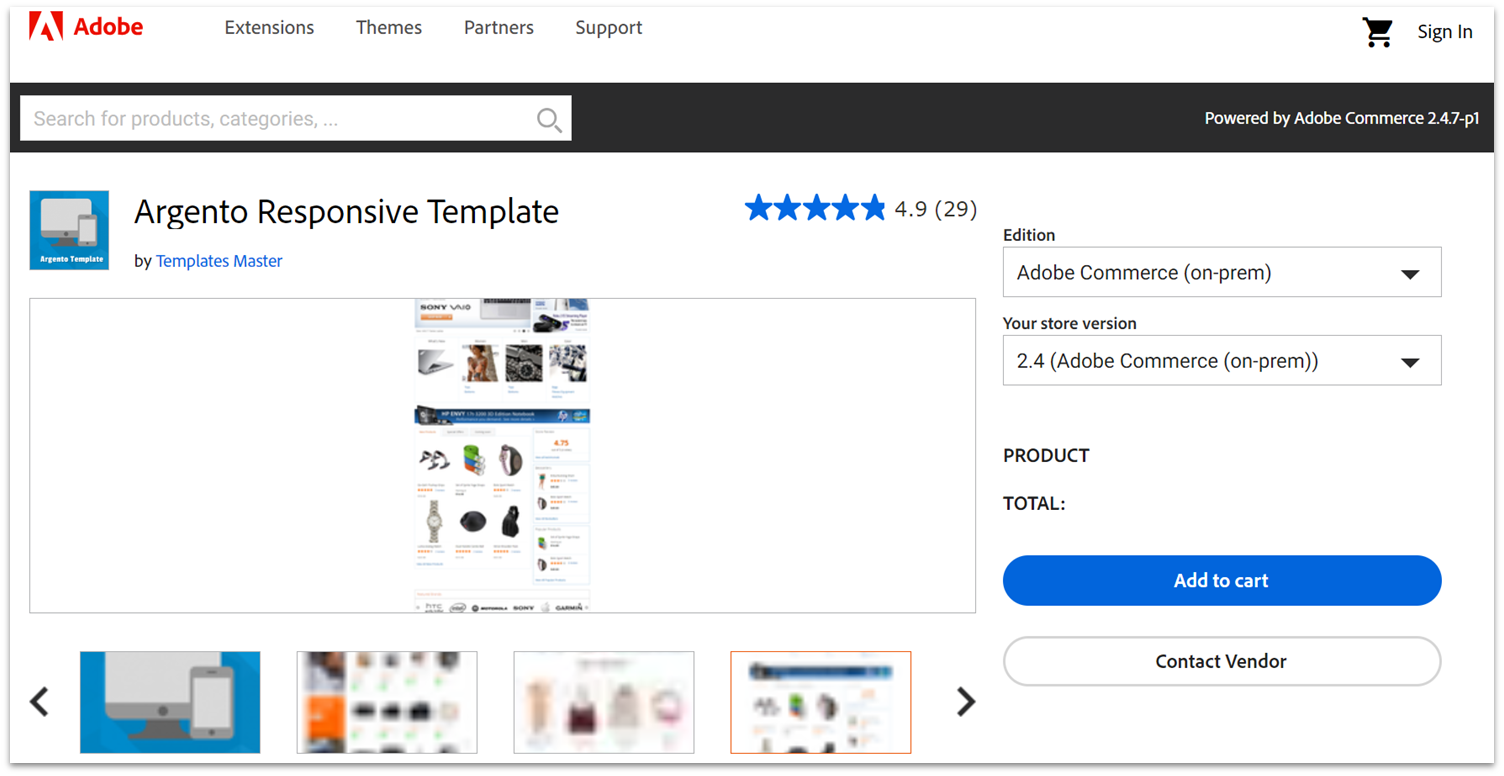

Features and Ease of Use
Magento Made Me Want to Drive My Head Through a Wall
Magento’s features are only limited by your imagination and how many git repositories you’re willing to comb through. That said, Magento is far from user-friendly. I’ll admit that a good chunk of my frustrations stemmed from the fact that I insisted on installing Magento locally (on my home computer instead of on a server). But any platform that forces me to install two separate virtual machines just to get up and running will sour my opinion on its ease of use (you’ve been warned, Drupal). Getting started with BigCommerce is a lot simpler. All you have to do is head over to BigCommerce’s site, choose BigCommerce Essentials, and select a plan that works for you or get started with a 15-day free trial. Then, you’ll just have to input contact information like your name, email, and phone number to get started.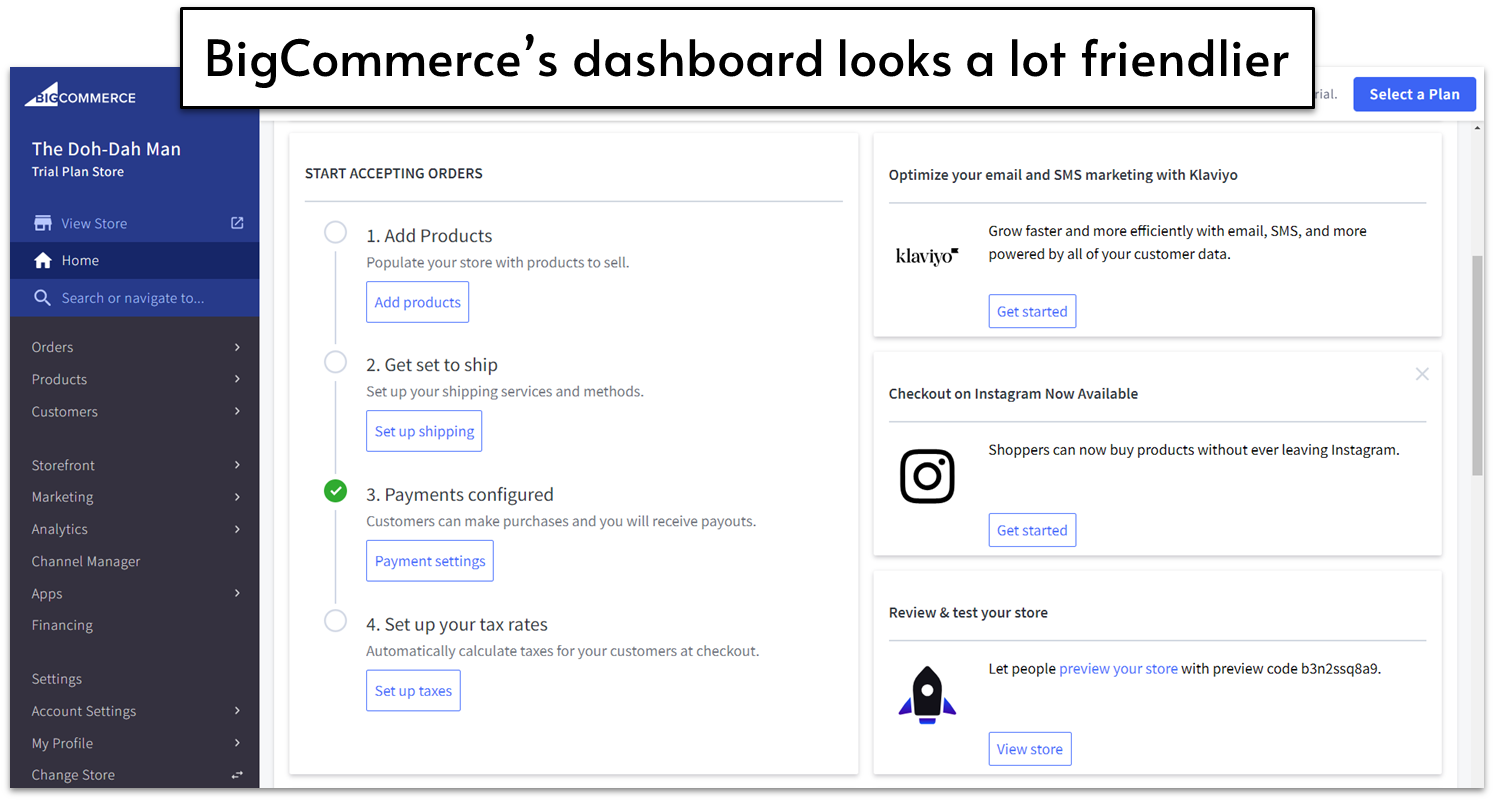
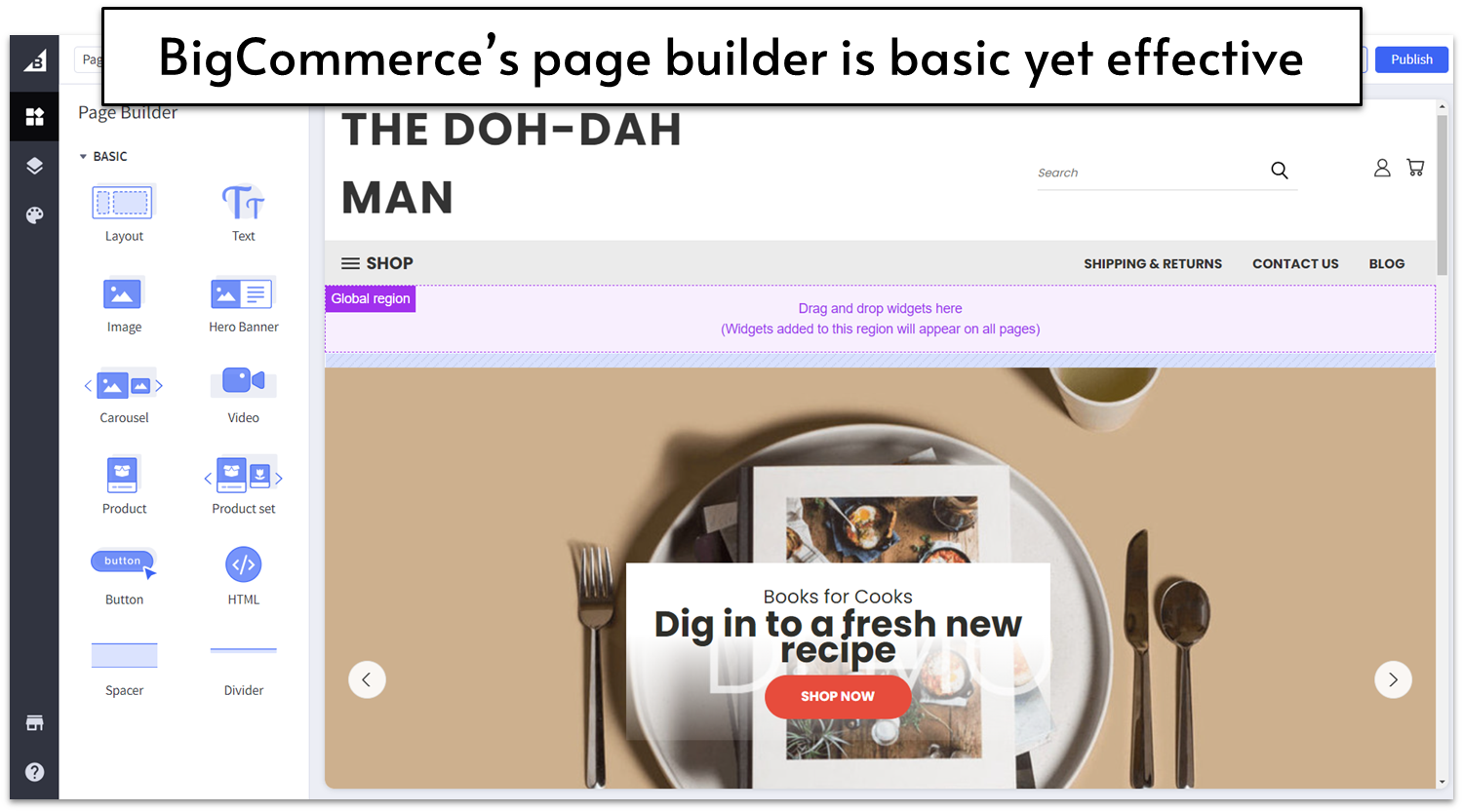
Apps and Plugins
BigCommerce and Magento Offers No Limits to Store Expansion
There are over 1,300 extensions available in the BigCommerce app store, from AI-powered integrations to financing and marketing integrations, and of course, tons of integrations with third-party services like TikTok, PayPal, and Amazon. With so many integration options, the quality and price vary widely.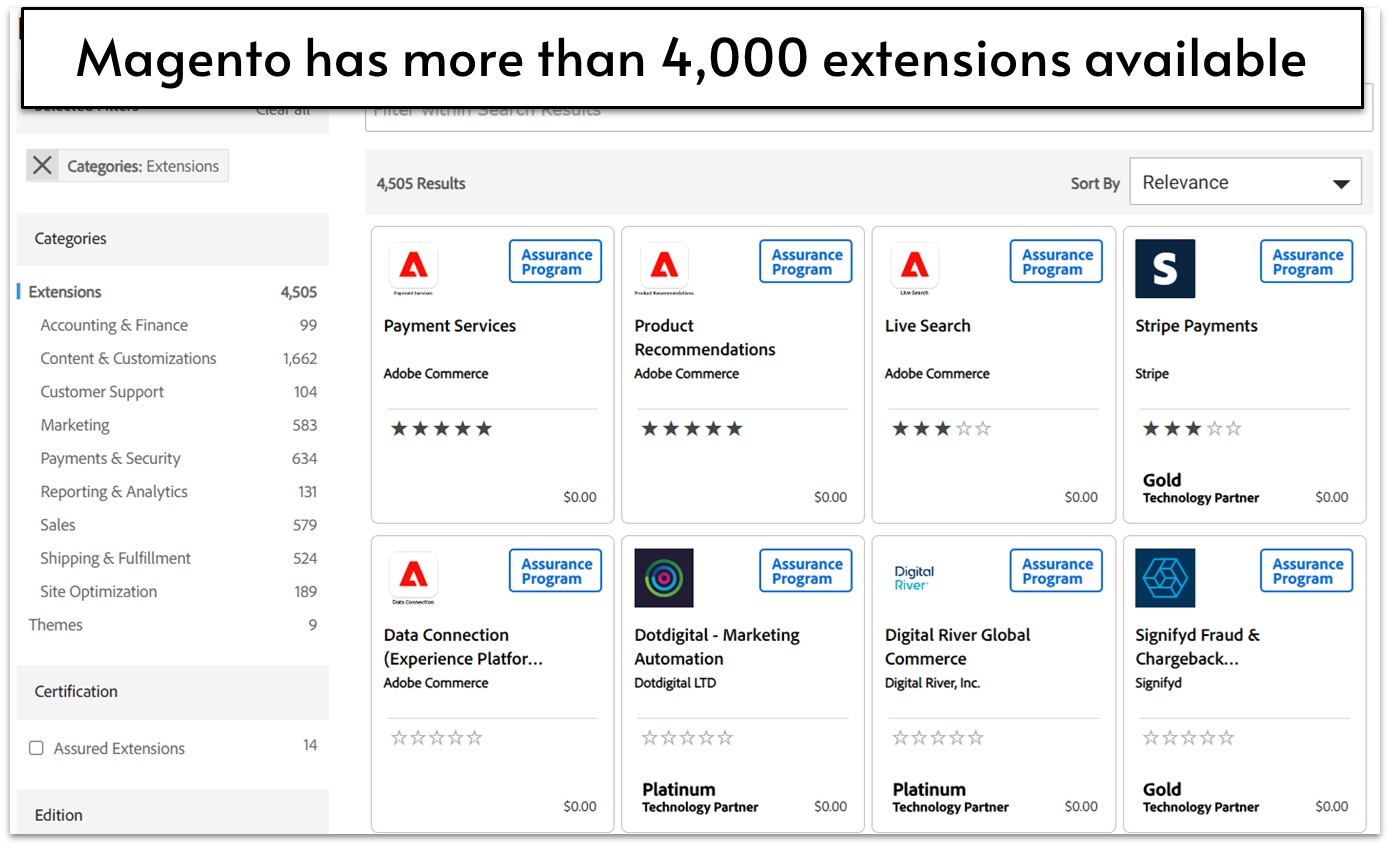

Short on time?
Take this one-minute quiz to learn which website builders are best for your project.
Marketing
BigCommerce’s Marketing Tools Are Easier to Use
Magento’s backend includes a dedicated marketing tab from which you can create email newsletters, manage user comments, and edit custom rules for shopping carts and catalogs. As with anything else in Magento, these options don’t really come with any hand-holding to help you create marketing campaigns or promote your site, but you do get full access to advanced settings. That means that the impact of your in-store marketing is entirely up to you, for better and for worse. BigCommerce, on the other hand, offers a much more classic marketing tab with separate sections for creating banners, promotions, gift certificates, abandoned cart recovery, and more. Using any of these tabs is a considerably user-friendly way to create successful marketing for your site.SEO
You’ll Have to Set Up Your SEO Settings Manually
As for search engine optimization (SEO), it’s extremely important that you can access all the relevant SEO features like URL customization, sitemap creation, meta tags and descriptions, and more if you want to appear in a good spot in search engine results. The good news is that both Magento and BigCommerce give you complete access to all the things I mentioned above. The bad news is that neither really provides any help or guidance on its own (BigCommerce does offer SEO audits for an extra fee). This means that applying the best SEO practices to your site will be completely your responsibility.Pricing
Overall, BigCommerce Is the Most Affordable Choice
I was able to get my Magento site up and running completely for free, which might run counterintuitively to what the title above says. However, that’s only because I installed it on a local server, which means that my Magento site doesn’t really exist if my computer is off. Though the Magento open-source application is entirely free, you will have to set it up on a server you have administrator access to. That means that you can’t just use any regular shared hosting either. You need, at the very least, virtual private server (VPS) hosting for a functional Magento store. And that’s not even counting additional costs you might need to take into account like Secure Sockets Layer (SSL) certificates, Domain Name Systems (DNS), and additional security protections. However, that’s not the only way to get Magento. Adobe offers managed solutions as part of the Adobe Commerce package. So you can get all the benefits of Magento without having to purchase multiple different services and have all the technical aspects of installation and management handled for you. And it only costs… thousands of dollars. Adobe Commerce doesn’t offer plans at a fixed price point like other platforms. Instead, you have to get in touch with Adobe for a custom consultation where they’ll take your store’s calculated value into account to come to a pricing agreement. Though I wasn’t able to get an exact number for my tests, the average price is anywhere between the low thousands (but not lower than $10,000) and… well, the high thousands. Though BigCommerce Enterprise operates under a similar model, BigCommerce Essentials (the version I used for my testing) follows a more traditional pricing structure, with a starting price of $29.00 per month for the Standard Plan and going up all the way into $299.00 per month for the Pro Plan. Usually, here’s where I’d compare similar plans to help you visualize the difference, but unfortunately, there’s simply not enough common ground for any kind of comparison. To be honest, I don’t recommend the Adobe Commerce options and would advise you to look for your own server, security, and whatnot on your own, which could probably bring down the price considerably. If you’re looking for an enterprise-level plan, then the pricing competition is probably a lot closer. For most online businesses though, BigCommerce is by far the most affordable choice.| Adobe Commerce | BigCommerce | |
| Starting price | Price on request (usually from $10,000 per year) | $29.00 |
| Unlimited products | ✔ | ✔ |
| Automated tax calculation | ✔ | ✔ |
| Abandoned cart recovery | ✔ | ✔ (from Plus plan) |
| Built-in shipping and fulfillment services | ✘ | ✔ |
| Point-of-sale (POS) system | ✘ | ✔ |
| 24/7 customer support | ✔ | ✔ |
Support
Magento’s Community Support Provides Continuous Multichannel Assistance
Besides the official channels at Adobe, Magento has a large and dedicated community of developers, enthusiasts, and merchants that constantly provide support, update the app, and create new offerings like applications and themes. The truth is that with any doubt you have regarding Magento, you’ll have thousands of enthusiastic peers ready to help (and more than likely, that your question has already been asked and answered). However, since I’m comparing Magento as a product, I’ll have to limit myself to the official channels once again.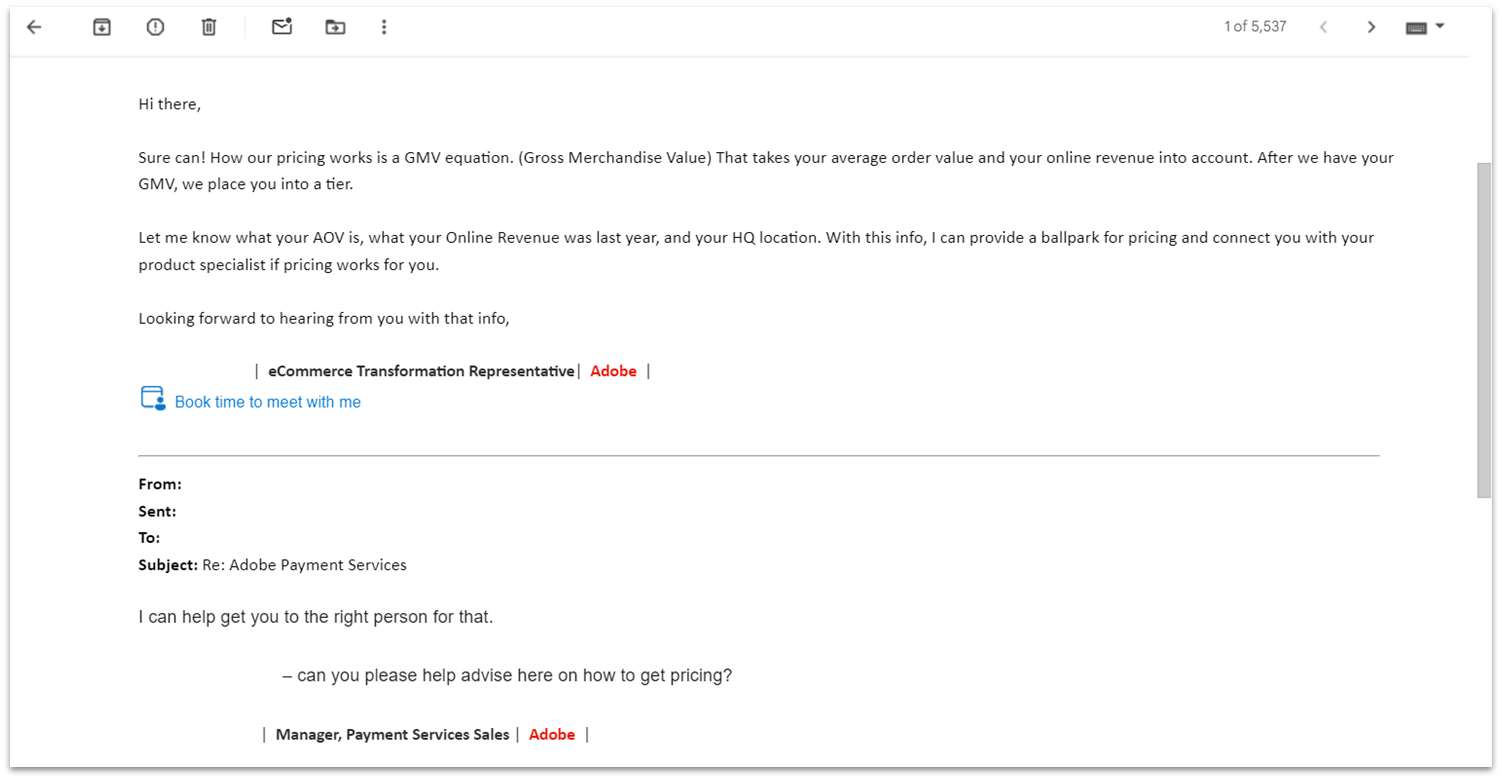
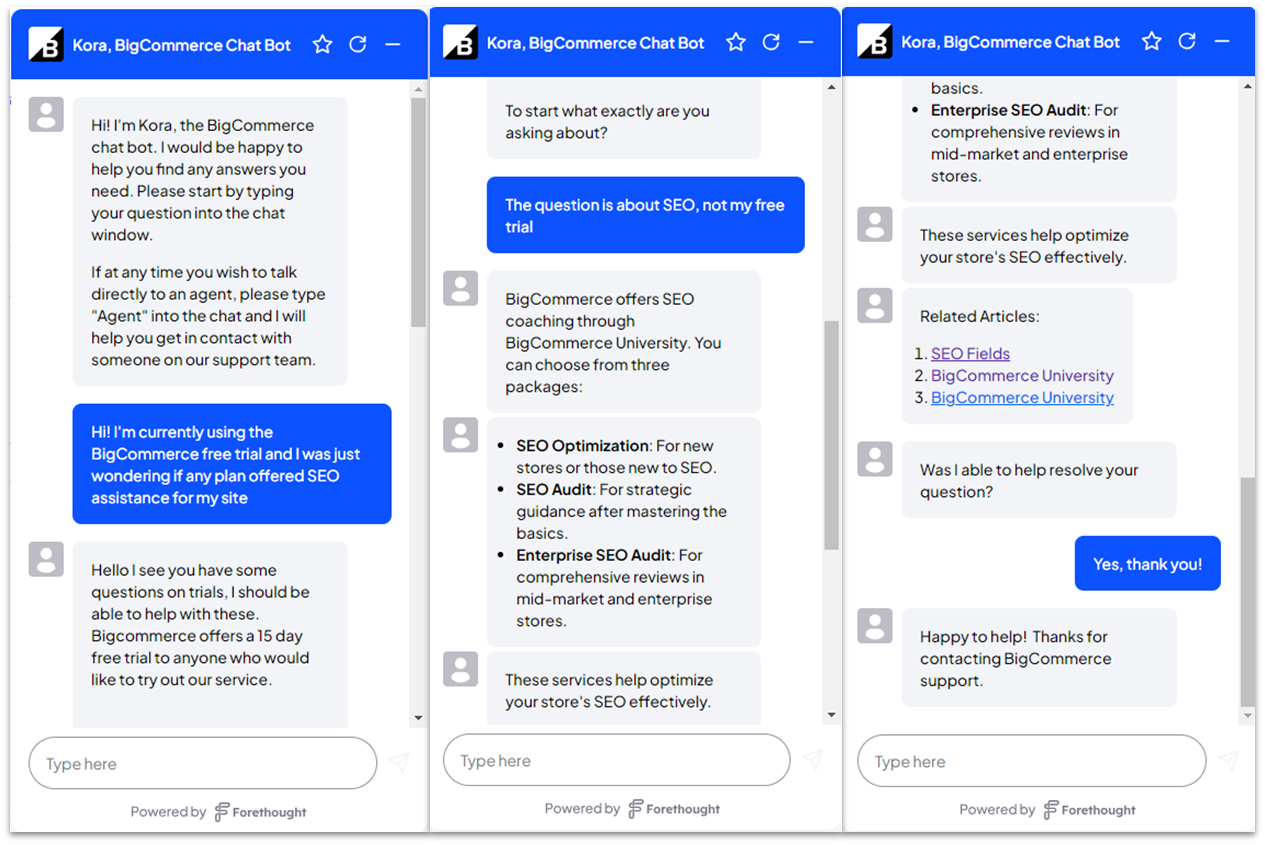
BigCommerce Is the Clear Choice for Most, but Magento Could Be Outstanding for the Rest
I’ve compared truly bad services against better ones before, with the best service winning about every category. But that’s not the case with Magento vs BigCommerce. Though BigCommerce won by a landslide in most categories, it doesn’t mean Magento is bad, just less suitable for most users. Most starting e-commerce websites don’t have the luxury of having a dedicated web developer on board and probably don’t have access to a VPS or their own deployment server. The truth is that as a package, Adobe Commerce can get prohibitively expensive. So, if you run a small-to-medium-sized business, BigCommerce is the most affordable, complete, and user-friendly option. However, if you do have the technical proficiency, then Magento is one of the most powerful tools out there. It will give you control over every single aspect of your site. Just keep in mind that outside of the Adobe Commerce package, Magento is an unmanaged service, so it’ll be up to you to keep an eye on your store’s health constantly.Magento (Adobe Commerce)
BigCommerce
Templates
Not many official templates, hard to customize
190+ different and fairly customizable templates
Features & Ease of Use
Incredibly advanced features, but very complex to use
A nice mix of advanced features and user-friendliness
Apps and Plugins
4,000+ official apps and more from third-party sources
1,300+ apps available on the store
Marketing
Completely customizable options
Advanced options with some help for good measure
SEO
Advanced customization and control over elements
Easy-to-use tools and apps
Pricing
Free as an open-source platform, very expensive as Adobe Commerce
Similar pricing to other e-commerce platforms
Support
Outstanding community willing to help each other
Quality support channels














